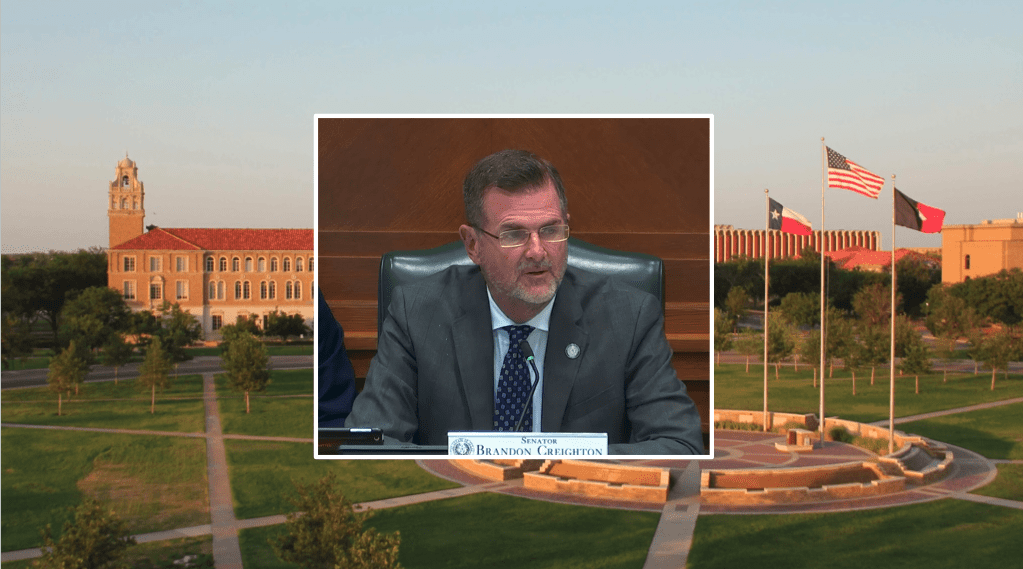In 2019, the Texas Legislature appropriated a total of $258 billion, a 24 percent increase over what it appropriated in 2017. Looking at it a different way, the $248 billion the Legislature appropriated in 2019 for the current biennium was an increase of $32 billion, or 24 percent, over what it appropriated in 2017 for the previous biennium.
No matter how you want to measure the spending, history tells us that the Texas Legislature will try to keep up the spending spree as it comes to Austin for its 87th regular session. However, the current circumstances make it the perfect time for Texas to actually cut spending and the size of Texas government.
Texas Comptroller Glenn Hegar’s announcement this week let legislators know they are in for a tough time, fiscally. The ending balance for the current biennium will be close to a negative $1 billion. Making up for that and paying for decisions of previous legislatures to fund highway construction and put away savings means that the Legislature will have only $112.5 billion of general revenue available for spending, down slightly from $112.96 billion for the current budget.
Budget crunches like this, though, haven’t stopped the Legislature from increasing spending in the past. In 2011, it passed a budget that at first appeared to reduce spending by 5 percent. However, it was all smoke and mirrors. The big trick was to underfund Medicaid by about $4 billion, with legislators hoping that when 2013 rolled around, they would have enough money to make up the difference.
Boy, did they. Not only did they turn the 5 percent cut into a 1.4 percent increase, they increased funding for the next biennium by almost 10 percent.
The Legislature’s seemingly insatiable appetite for spending is actually a symptom for the insatiable demands of many of its constituents for other people’s money. Demands which, unfortunately, the Legislature has a hard time saying no to.
Local governments, for instance, constantly demand more money from taxpayers. Recently, this resulted in local governments turning the property tax “relief” touted by state leaders in 2019 into large back-to-back property tax hikes.
Next, big business is always at the table demanding its fair share. Last session, grassroots Texans attempted to eliminate property tax abatements for big business, including renewable energy generators. But businesses lobbied up and shot efforts at fiscal responsibility down.
These guys are like amateurs, though, when compared to the transportation lobby, which persuaded the Legislature (and Texas voters) to set aside money in the Texas Constitution for concrete and engineers. You may have noticed, however, that all that money never relieved congestion. What finally accomplished that was the government shutting down the economy in response to the COVID scare.
Speaking of shutting down things, regulators at state agencies and local governments are also voracious. After all, if they cannot spend your money to regulate something, they would be out of a job. And their bosses, the politicians, would start running out of campaign contributions. So we have to fund them, too.
Finally, there are the welfare advocates who constantly tell us that if they cannot have our money to spend on their salaries, grants to nonprofits, and occasional help to the poor, we are haters.
Despite these challenges, Hegar’s numbers provide the Legislature with the perfect opportunity to control spending growth and keep state spending flat by avoiding the use of any budget gimmicks like underfunding Medicaid or delaying payments to school districts.
If they can pull that off, the path from there to cutting the Texas budget is relatively easy. This is because, in 2019, the Texas Legislature expended $8.3 billion on what legislative leaders claimed was one-time “Hurricane Harvey-related Funding.”
About $636 million of this was covered by “other” state funds. So if legislators stick to their “one-time” claim, appropriators will have a little wiggle room to keep state spending flat. And cutting the remaining $7.6 billion of federal funds would result in an almost 10 percent reduction in the spending of federal funds.
Overall, Texas could see the state budget drop from $248 billion for 2020-21 to close to $240 billion, a reduction of more than 3 percent. Texas has never accomplished anything like this, at least not in most of our lifetimes.
Other than the temptation to use budget gimmicks, the big wildcard here is—surprise—Washington D.C. With Biden, Schumer, and Pelosi taking over the town, it is quite likely that they will seek to satiate liberal states by throwing hundreds of billions of dollars at them to pay for the effects of their draconian restrictions on the economy in response to COVID-19.
If this happens, Texas Republicans will be challenged. Their first response will be to take the federal money to meet the demands of their greedy constituents. This is where the conservative grassroots come into the picture.
In 2019, many Republicans were scared to death after some close calls in the 2018 general election. They decided that the only way to beat the Democrats in 2020 was to act like Democrats, kowtowing to teachers’ unions and other leftist groups and spending a lot of your money.
Given the tough economic times we are facing, Texas has a real chance to cut spending and reduce the size of state government. But the only way we will see this come to pass is if Republican policymakers are more scared of us than of liberals, big business, and the Austin lobby. It is up to us to make this happen.
This is a commentary submitted and published with the author’s permission. If you wish to submit a commentary to Texas Scorecard, please submit your article to submission@texasscorecard.com.





